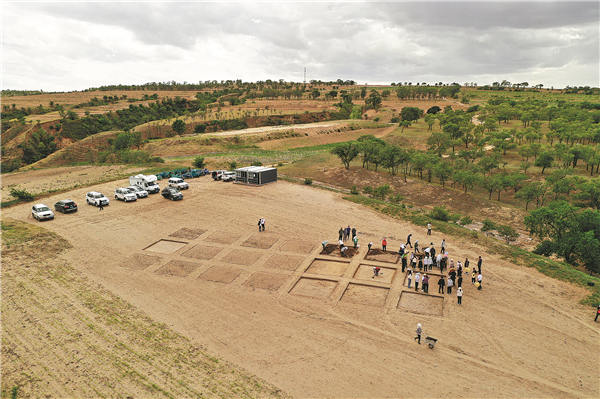

An attempt at innovation is the application of digital technology during the excavation. According to Liu, the institute is cooperating with a technology company in Beijing to develop an online system to record detailed information of each artifact that will be unearthed.
"A systematic and scientific excavation on the site is meaningful for studies on the type, specific time, features of settlement forms, settlement evolution, economy, development of handicraft, as well as the sacrificial and belief systems of this area of the Lower Xiajiadian Culture, and its cultural relationship with the Xia (c. 21st century-16th century BC) and Shang (c. 16th century-11th century BC) dynasties," Zhang said at a seminar introducing the excavation in Aohan Banner on July 6.
The site is located between Chengzishan and Yajishan, two important sites of Lower Xiajiadian Culture, which are both believed to be related to sacrifice. Xidaliang may have relations with them, and it seems they can be logically integrated, though further judgment is being withheld until after the excavation, says Liu.
Chengzishan is currently the largest, most complete sacrificial site of Lower Xiajiadian Culture in Northeast China with the clearest exposed relics and most complicated layout of the Bronze Age, says Liu.
He hopes that findings of the Xidaliang site will help build a national archaeological ruins park in the area, with the Chengzishan site as the center. "Our archaeological work today is not only for the benefit of academic research, but also to contribute to the social and economic development of the local area," says Liu.
Liu also mentions that some artifacts unearthed from the Dadianzi site in Aohan Banner, another Lower Xiajiadian Cultural site, are very similar to those unearthed from Erlitou site in Luoyang, Henan province, which is widely believed to have been the capital during the late period of the Xia Dynasty.
"Through excavations on such Lower Xiajiadian Cultural sites, we not only want to improve our knowledge of the local cultural sequence from Neolithic times to the Bronze Age, but also to carry out cultural comparison research to understand the diversified and integrated pattern of Chinese civilization during its origin and formation process," says Liu.